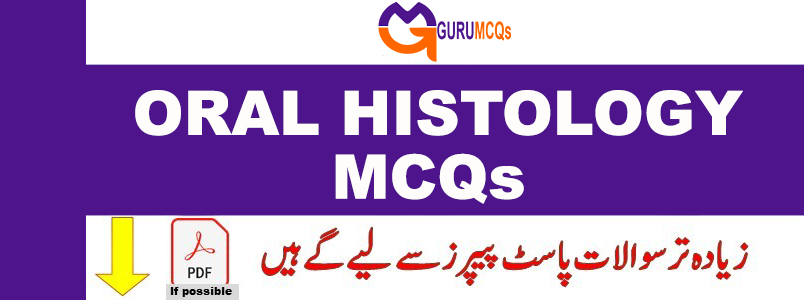
Histology, derived from the Greek words “histo,” meaning tissue, and “logy,” meaning science, is the scientific discipline dedicated to the study of tissues. By delving into oral histology and embryology, individuals can establish a robust understanding of oral biology. The subject encompasses the examination of cellular and tissue development and structure, including the various stages of tooth development and maturation. Areas of focus include the constituents of tissues such as cells, intercellular substances, tissue fluids, and components of human teeth like enamel, dentin, and dental pulp. Gurumcqs.com offers Oral Histology Multiple-Choice Questions (MCQs) along with answers, carefully curated from reputable reference books on oral histology. These MCQs are valuable not only for academic purposes but also for interview preparation, entrance exams, competitive assessments, and certifications, catering to individuals at all levels of expertise, whether experienced professionals, newcomers, or students. Additionally, those interested can explore Oral Pathology MCQs for further study.
171. Butt joint in cementoenamel junctions seen is _________% of cases?
A. 10%
B. 30%
C. 60%
D. 90%
172. Cementum_____________?
A. Is derived from the sheath of hertwig
B. Is acellular in the apical third of the tooth
C. Often overlaps the enamel
D. Does not contain collagen fibres
173. Which of the following is correct?
A. Reparative dentin is characterized by having fewer and more twisted tubules than normal dentin and may include odontoblasts
B. Dead tracts appear black in transmitted and white in reflected ligth
C. Sclerotic transparent dentin appears transparent or light in transmitted light and dark in reflected light
D. All of the above
174. Matrix vesicles_______________?
A. Are found in mantle dentin
B. Contain collagen
C. Produce alkaline phosphatase
D. Inhibit mineralization
175. Chronic periapical inflammation is usually associated with____________?
A. Ankylosis
B. Resorption of cementum
C. Hypertrophy of cementum
D. Hyperplasia of cementum
176. If cementum is not formed______________?
A. Ankylosis may occur
B. Exforliation of teeth occur
C. Delayed eruption
D. No change occurs
177. Which of the following is true______________?
A. The uncalcified matrix of cementum is called cementoid
B. Cementum contain type I collagen predominantly
C. Cementodentinal junction is sometimes scallopes in deciduous teeth and smooth in permanent teeth
D. All of the above
178. Acellular cementum is typically found in_____________?
A. Coronal half of root
B. Apical half of root
C. Apex of root
D. Entire root
179. At the cemento enamel junction, which of the following occurs_____________?
A. Cementum meets enamel
B. Cementum overlaps enamel
C. Cementum does not meet enamel
D. All of the above
180. Inorganic content of cementum is_____________?
A. Less than bone
B. More than bone
C. Equal to that of bone
D. More than that of enamel

Pingback: Dental Materials MCQs for Competitive Exam Preparation - GURU MCQS